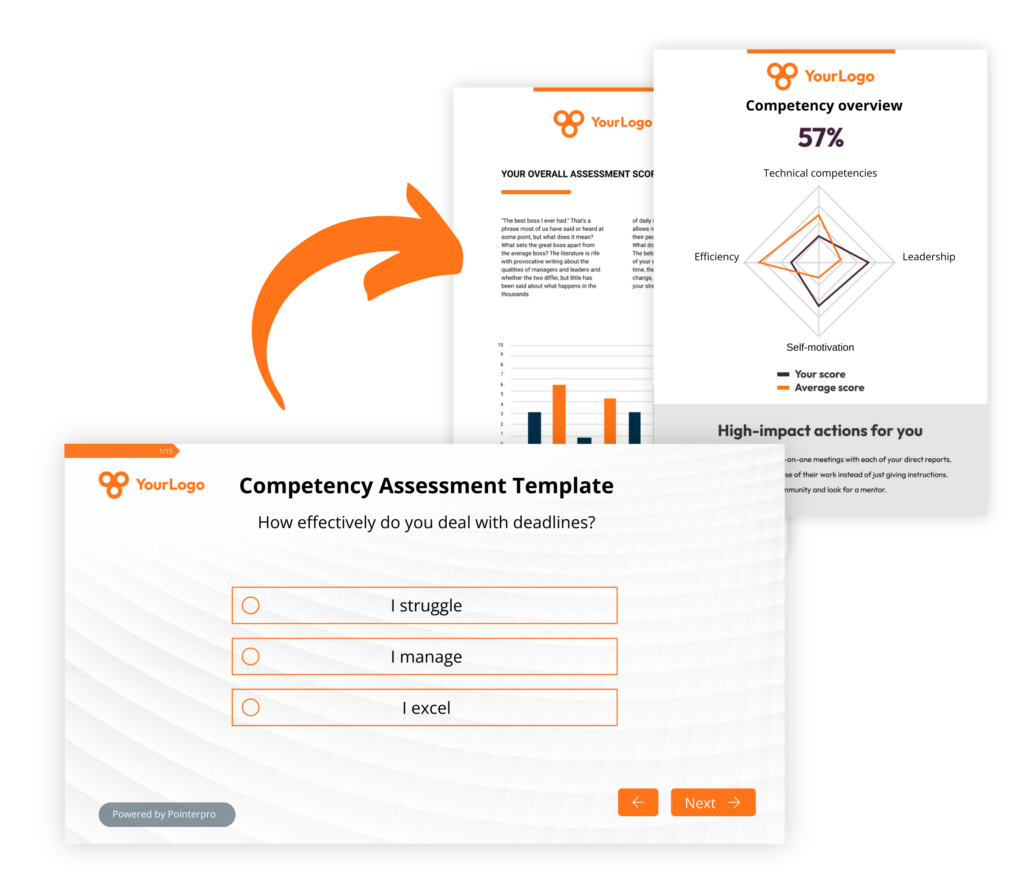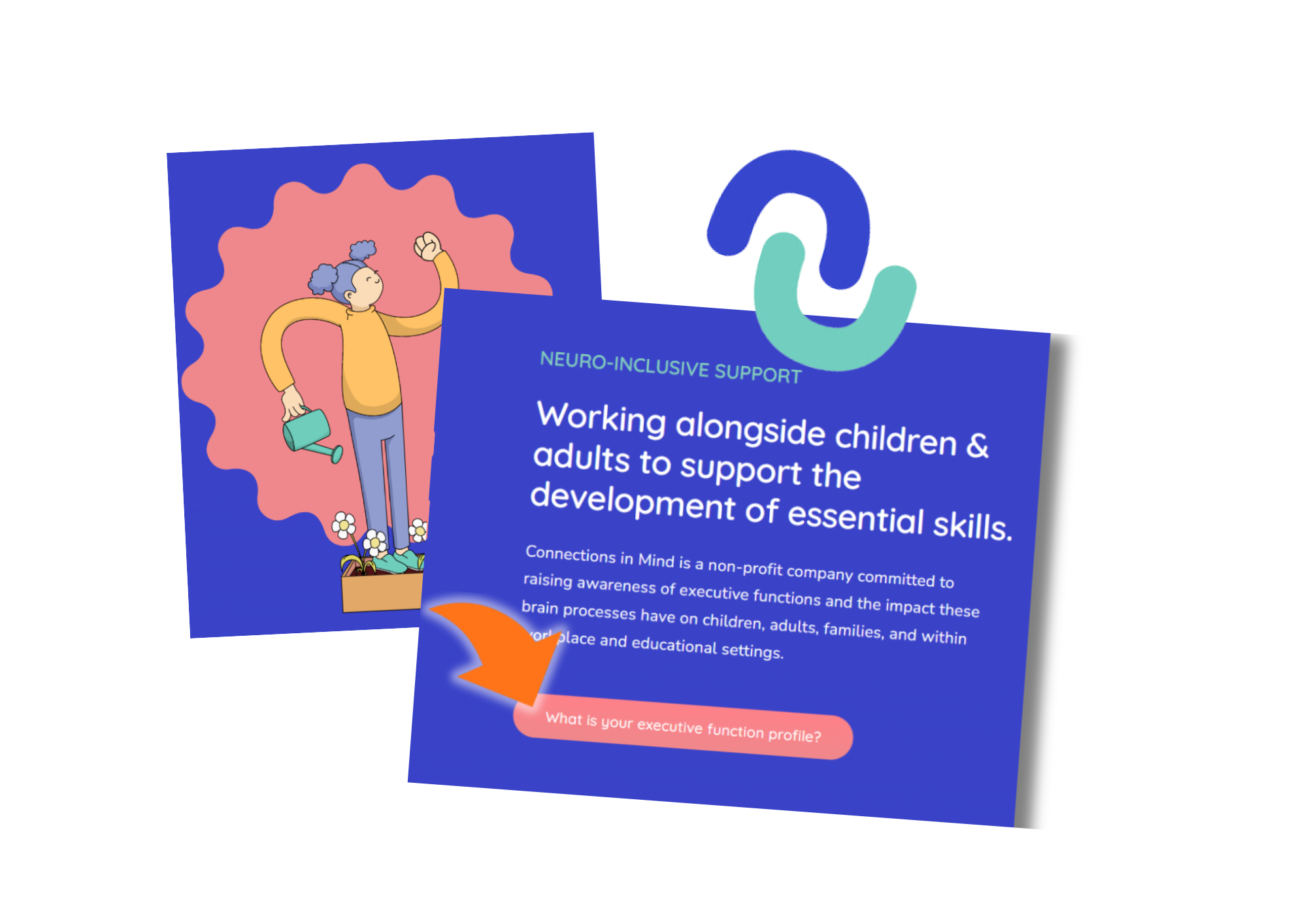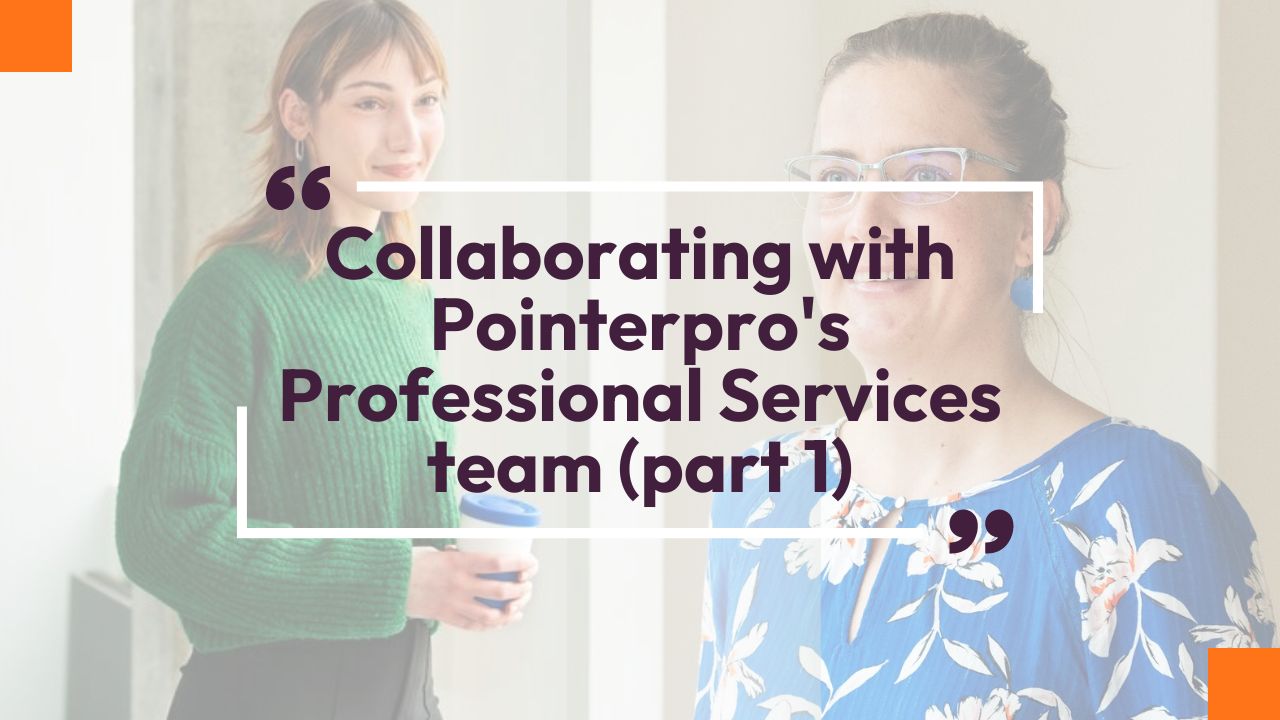Competency assessment template
What if you could build a competency assessment tool to assess and advise respondents?
Competency assessments objectively align stakeholder views on employee potential and needs. They also increase employee engagement.
Pointerpro is the 2-in-1 software that combines assessment building with personalized PDF report generation.

What is a competency assessment?
An online competency assessment is a nuanced tool designed to evaluate an individual’s overall capability in a specific role, extending beyond mere skills. As opposed to traditional skills assessments that focus more on (technical) abilities for professional objectives, these assessments encompass a broader range of attributes, including knowledge, behaviors, and personal qualities. They delve into the “what” and the “why” behind task execution, offering a comprehensive view of an individual’s competencies that are crucial for success in their role.
This approach is instrumental in identifying key areas for development and ensuring a holistic understanding of one’s potential and performance. You might say that a competency assessment is particularly useful when considering employees for the long-term challenges of your organization, rather than only for the short-term challenges.
3 reasons to use Pointerpro as a competency
assessment tool?
Interactive user experience
With the Questionnaire Builder you get to create an engaging assessment. How? With numerous design and layout options, useful widgets and countless question types.
Refined, score-based analysis
Our custom scoring engine helps you quantify different competencies in your assessment. The result? An objective and very nuanced assessment of your respondents.
Automated feedback in PDF
Thanks to your setup in the Report Builder, respondents instantly get a detailed PDF report: with helpful charts, a personalized analysis of risks, and actionable tips.
1.500+ businesses worldwide build assessments with Pointerpro









3 steps to creating competency-based assessments in an organization
Step 1: Define the competencies you want to assess (competency mapping)
Defining competencies as a leader in an organization is a critical process that can significantly impact the effectiveness and success of your team. Here’s a step-by-step approach to help you define the competencies you’re looking for:
- Understand organizational goals and values: Start by aligning with your organization's long-term goals and core values. The competencies you define should support these objectives and reflect the culture you want to cultivate.
- Analyze job roles: Examine each role in your organization carefully. Consider what tasks each role entails and what makes someone successful in that position. You may need to differentiate competencies for different levels or departments.
- Identify required skills and behaviors: For each role, list out the specific skills, knowledge, and behaviors that are necessary. Think about both technical skills and soft skills, like communication, teamwork, and problem-solving.
- Consult with stakeholders: Engage with various stakeholders, including managers, employees, and possibly clients, to gain insights into what competencies are valuable for different roles. This can help ensure a well-rounded perspective.
- Benchmark against industry standards: Look at industry trends and standards to understand what competencies are currently valued in your field. This helps in keeping your organization competitive and forward-thinking
- Prioritize and categorize: Once you have a comprehensive list, prioritize the competencies based on their importance and relevance to each role. You may categorize them into core competencies (essential for all employees) and role-specific competencies.
- Develop behavioral indicators: For each competency, develop clear behavioral indicators. These are specific actions or behaviors that demonstrate competency in a real-world setting. This step is crucial for the effective assessment and development of these competencies.
- Integrate into HR processes: Ensure that the defined competencies are integrated into various human resources processes like recruitment, performance evaluation, training, and development programs.
- Review and update regularly: The business world is dynamic, and competencies may evolve. Regularly review and update the competencies to ensure they remain relevant and aligned with your organizational goals.
- Communicate clearly: Finally, it’s important to communicate these competencies clearly to the entire organization. Employees should understand what competencies are expected of them and how these tie into their personal growth and the organization’s success.
Step 2: Create the competency assessment framework
After defining the competencies, the next step is to design an assessment that accurately measures them. This involves:
- Develop assessment criteria: Create specific, measurable criteria for each competency. These criteria should be clear and objective, allowing for consistent evaluation.
- Choose assessment methods: Decide on the methods that will be used to assess each competency. This could include a mix of self-assessments, supervisor evaluations, peer reviews, or even practical tasks or simulations, all administered through an online questionnaire format.
- Create questionnaire questions: Design questionnaire questions that are concise, yet comprehensive enough to cover all aspects of each competency. Questions should be structured to elicit responses that clearly indicate the presence or absence of a competency. Prioritize multiple-choice questions to allow for scoring in your assessment. You can also allow the respondent to provide some open-ended information.
- Ensure validity and reliability: The assessment should be both valid (accurately measuring what it’s supposed to measure) and reliable (yielding consistent results over time).
- Pilot test: Before full implementation, conduct a pilot test with a small group to identify any issues with the assessment design and make necessary adjustments.
Step 3: Implement, distribute, and manage the competency assessment
With your online assessment tool in place, the final step is to effectively implement and manage the competency assessments across your organization. This involves a streamlined process for distribution, monitoring, and refining the assessments:
- Set up the competency assessment: Configure your online assessment to reflect the defined competencies and assessment framework questions, using custom score-based calculation (see the video below that explains custom scoring in laymen’s terms*). Ensure that the questionnaire is user-friendly, accessible, and of course secure.
- Communicate with stakeholders: Communicate with managers but also with future respondents about the objectives, process, and importance of the competency assessments to ensure clarity and engagement.
- Distribute assessments: Use an efficient online tool to distribute the assessments to the respective respondents. Some assessment tools, like Pointerpro, allow you to schedule, send reminders, track completion rates and even delegate the distribution of the assessments to different managers.
- Monitor and support: As respondents complete their assessments, monitor the process through your assessment tool's dashboard. Be available to offer support and answer any questions or concerns that might arise.
- Collect and analyze data: Your assessment tool should facilitate the collection and aggregation of assessment data. Analyze this data to gauge competencies across the organization and identify strengths and areas for development.
- Provide feedback to respondents: Provide feedback to respondents based on their assessment results. Encourage discussions and learning opportunities to help them understand their competencies and areas where they can improve. Pointerpro is an assessment platform that allows you to automate giving personalized feedback and advice to respondents.
- Review and update regularly: Periodically review the entire assessment process and tool functionality to ensure they remain relevant and effective in meeting your organizational goals.
* Custom scoring explained in simple terms by our Product Director, Bruno.
30 competency assessment example questions
Here are 30 of the best competency assessment template questions divided into 3 similar but distinct categories:
- 10 employee competency assessment example questions
- 10 pre-employment competency assessment example questions
- 10 laboratory competency assessment example questions
10 employee competency assessment example questions
- How well do you understand and align with the company's current strategic goals?
- Rate your ability to apply feedback from performance reviews to your work.
- How effective are you in mentoring or supporting new team members?
- Assess your familiarity with and adherence to company policies and procedures.
- How consistently do you meet or exceed your work targets or objectives?
- Describe your participation and contribution in team meetings and discussions.
- How effectively do you manage your workload to meet deadlines?
- Assess your engagement and participation in company training or development programs.
- How often do you take the initiative to propose improvements or innovations in your work area?
- Rate your consistency in maintaining quality standards in your work.
These competency assessment template questions are designed to elicit responses that reveal employees’ behavioral competencies. They focus on their integration within the company, their role in ongoing processes, and their contribution to the organization’s objectives.
Unlike pre-employment questions, which aim to predict potential and fit, these questions assess actual performance, engagement, and alignment with company values and goals. They help in understanding how well the employee has adapted to and grown within the organizational culture and their role in continuous improvement. This approach provides valuable insights for employee development plans, succession planning, and overall organizational health.
10 pre-employment competency assessment example questions
- Are you comfortable learning new technologies or software quickly?
- Have you taken the initiative in a team setting without having a formal leadership role?
- Can you effectively solve problems when working independently?
- Do you prefer working in a team or individually?
- How would you rate your ability to communicate complex ideas to others?
- How do you handle challenging customer or client interactions?
- What best describes your approach to managing high-pressure situations?
- Are you comfortable making decisions with limited information?
- How do you typically respond to constructive criticism?
- Is attention to detail a strength of yours?
These pre-employment competency assessment template questions differ from employee assessments in that they focus more on potential and adaptability rather than existing role-specific knowledge and experience. Pre-employment questions are designed to gauge a candidate’s inherent qualities, such as learning agility, problem-solving skills, and potential for growth and leadership.
These assessments aim to predict how well a candidate will fit into the company culture and handle future challenges, rather than evaluating their performance in a current role. This approach is critical in identifying individuals who are not only capable of fulfilling the job requirements but also possess the potential to grow, adapt, and thrive within the organization. A good pre-employment competency assessment template can really boost your recruitment.
10 laboratory competency assessment example questions
Laboratory competency assessments are designed to ensure that laboratory personnel are competent to perform specific tasks and procedures accurately and safely. They’re much broader than just questionnaire-based evaluations. They often include practical demonstrations, direct observations, proficiency testing, and reviews of test results and records, in addition to questionnaires or written tests.
However, a questionnaire can still be an integral part of a laboratory competency assessment, focusing on theoretical knowledge, understanding of procedures, and compliance with standards. Here are 10 laboratory competency assessment template questions:
- How would you handle a chemical spill in the laboratory?
- Describe the steps to ensure accuracy in specimen collection.
- What is your process for calibrating laboratory equipment?
- Explain how you maintain quality control for a specific test or procedure.
- How do you verify and document test results?
- Describe the procedure for dealing with an unexpected result or discrepancy.
- How do you ensure compliance with laboratory safety protocols?
- Describe the steps for maintaining confidentiality and integrity of laboratory data.
- How do you handle equipment malfunctions or errors?
- Explain the importance of and your approach to continuing education in laboratory practices.
Laboratory competency assessments are crucial for ensuring that personnel have the necessary competencies and knowledge to perform laboratory tasks accurately and safely. The questions above are designed to evaluate theoretical understanding, practical application, and adherence to protocols and procedures.
These assessments are vital for maintaining the integrity of laboratory work, ensuring accurate and reliable test results, and upholding safety standards. They are essential not only for the quality control of laboratory processes but also for the ongoing professional development of laboratory personnel. Through these assessments, laboratories can identify areas for improvement and training, ultimately contributing to the advancement of scientific and medical research and diagnostics.
What Pointerpro clients are saying




How a competency assessment template can boost recruitment
A competency assessment template in recruitment is a structured tool that helps to identify and measure the key competencies required for a specific role. This approach boosts recruitment in several ways:
- Improved candidate fit: By clearly defining the competencies required, recruiters can more accurately match candidates to the role, ensuring a better fit in terms of skills, behaviors, and values.
- Streamlined recruitment process: A standardized template allows for a consistent and efficient assessment of all candidates, saving time and resources in the recruitment process.
- Objective decision-making: Using a competency-based template reduces biases in recruitment, as decisions are made based on measurable and relevant criteria.
- Enhanced candidate experience:Candidates are assessed on clear and relevant criteria, improving their experience and perception of the organization.
- Better onboarding and development: Understanding a new hire's competencies aids in creating effective onboarding and development plans, accelerating their integration and productivity.
Should I build a competency assessment template in Excel?
While Excel is a valuable tool for the initial development and quantitative modeling of a competency assessment, it is not suitable as a comprehensive, standalone solution for distributing and managing these assessments. Its primary strength lies in the preparational phase of creating the assessment structure (setting up a quantitative model). For the actual creation and administration of the assessment, specialized tools like Pointerpro are recommended, as they offer a secure, efficient, and user-friendly experience for both administrators and respondents.
Limitations of using Excel for full assessment building and distribution
- Security and privacy issues: When distributing assessments via Excel, there's a higher risk of data breaches or inconsistencies, as Excel files can be easily shared or altered.
- Limited user experience: Excel cannot match the engaging interface and interactivity provided by dedicated assessment platforms, potentially affecting the response rate and quality.
- Complexity with large data sets: Handling and analyzing large sets of assessment responses in Excel can be cumbersome and error-prone, especially compared to specialized assessment platforms.
- No integrated assessment features:Excel does not support automatic scoring, real-time feedback, or interactive question formats, which are essential features of modern assessment tools. It requires a duct tape solution to constitute a real online assessment.
In the video below, Pointerpro co-founder Mark Penson touches on the limitations of so-called duct-tape solutions:
Limitations of using Excel for full assessment building and distribution
In the video below, Pointerpro co-founder Mark Penson touches on the limitations of so-called duct-tape solutions:
- Structuring the assessment: Excel allows you to clearly define competencies, set up scoring models, and organize questions in a structured format.
- Facilitating collaborative development: Excel supports collaborative input and revisions from different team members, you would not necessarily want to give access to your assessment platform.
- Transitioning to online tools: The data and structure developed in Excel can be seamlessly imported onto an online platform like Pointerpro, ensuring continuity from the preparatory phase to the final, interactive assessment.
In essence, Excel is an excellent tool for laying the groundwork for a competency assessment template, but again, you really need a dedicated assessment platform for optimal implementation and management of your assessment.
Also, once you’ve collected data from your assessment, Excel can still be useful to analyze data or perform benchmark analyses on external or historical data. So no reason to get rid of Excel or any other spreadsheet tool you may use, just yet!
7 other common competency assessment templates
In certain contexts, you may want to develop very specific competency assessments. For instance, if you’re a specialized consultant in a particular domain or industry:
- Leadership competency assessment template: Aimed at managerial or leadership roles, it evaluates strategic thinking, decision-making, team management, and vision.
- Conflict resolution competency assessment template: This assesses an individual's ability to effectively manage and resolve conflicts. It focuses on skills like negotiation, empathy, problem-solving, and communication in conflict situations, critical for roles that frequently involve mediation or dispute resolution.
- Sales competency assessment template: Tailored for sales roles, focusing on customer relationship management, negotiation, persuasive communication, and sales strategy.
- Customer service competency assessment template: Ideal for customer support and service roles, assessing problem-solving, empathy, patience, and effective customer communication.
- Project management competency assessment template: Designed for project managers, evaluating competencies in project planning, risk management, resource allocation, and team leadership.
- Emotional intelligence competency assessment template: Assesses aspects of emotional intelligence, including self-awareness, self-regulation, motivation, empathy, and social skills.
- Innovation and creativity competency assessment template: Designed to evaluate an individual's capacity for innovative thinking and creativity. It assesses qualities like originality, adaptability, problem-solving, and the ability to generate new ideas. This is particularly valuable for roles that require constant innovation and creative thinking.
Each of these competency assessment templates is structured to address the specific competencies relevant to different roles, ensuring a comprehensive and effective assessment process.
Create your competency assessment today
You may also be interested in
Recommended reading

How Connections In Mind benefits the community interest through a digital mindset and a longitudinal assessment
The fact that communities benefit from diversity should not be news to anybody. One type of diversity you may not

Vlerick Business School digitalizes entrepreneurship development with Pointerpro [case study]
What do a top-tier international business school based in the capital of Europe and Pointerpro have in common? At the

Attain Global: How to do psychometric tests right and build a cutting-edge international business [case study]
In many countries worldwide, the pursuit of skillful and engaged employees is not so much a war on talent as


